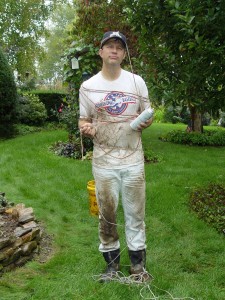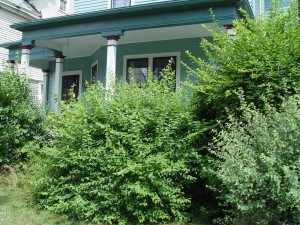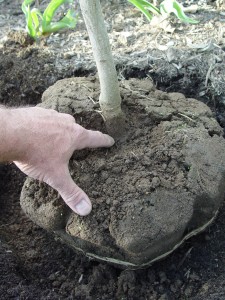Things I Wish Somebody Would’ve Told Me, Part 1
February 9th, 2013
As we head toward another spring planting season, a lot of folks no doubt are facing the mystery of a new yard — or maybe their first yard.
Experience, I’ve found, is the best teacher. Unfortunately, that’s the very thing we lack most when starting out. Over time, we gradually figure it out as we foul up and then correct one yard disaster after another. But by then, we’re too old and too tired to do much about it anymore.
So before I head off to the Old Gardener’s Home, here are 10 things I wish somebody would’ve told me 30 years ago (and 10 more next week):
1.) “Your soil is atrocious. Fix it.” The “soil” under most yards is usually 4 to 6 inches of marginal clay or shale spread out on top of heavily graded subsoil.
This is bad for drainage and root development. It sets your plants up for trouble no matter how much you fertilize or baby them.
The fix is to loosen what you’ve got to 10 or 12 inches (if you can) and work in 2 or 3 inches of compost or similar organic matter. You’ll end up with slightly raised beds of loose soil.
2.) “Before digging anywhere, know where your buried lines are.” Cable and Internet lines, in particular, often are only a few inches down.
I know. I severed a cable line on the very first hole I dug in my back yard. It wasn’t even along the property line. Most of my neighbors have hit lines in random places, too.
Don’t even try to guess. Call Pa. One-Call at 811 before digging anywhere. Utilities will mark your lines. It’s free for home gardeners.
3.) “You can’t plant whatever you like wherever you want.” Different plants have different needs. They’re live objects, unlike furniture. (With interior design, you also don’t have to worry about groundhogs eating the coffee table.)
If you don’t give a plant the conditions it likes, it may croak. So it’s well worth assessing your condition, then doing homework to pick plants that suit that site.
4.) “Plants don’t stay the way you put them.” They grow… some much bigger and faster than others. Know those mature sizes and plan accordingly. Remember, only dead plants stop growing.
5.) “Be patient. The fast-growing stuff usually isn’t best in the long run.” Fast-growing woody plants tend to be weak-wooded, which generally makes them more prone to breaking and/or flopping apart in storms as they age.
Yeah, I know you want those little plants — especially trees — to look like something soon. But there’s much to be said for compact, slow-growing plants.
6.) “Different parts of the yard can be drastically different.” Every yard has “microclimates” that can determine what plants will work where.
Some areas get morning sun and afternoon shade. Others are in full sun or constant shade. Some areas might be dry, some might be wet. Some spots are windy, some are frost pockets.
Get to know these vagaries, and you’ll save much on dead-plant costs. It’s much better to match your plants to existing microclimates than to try and change conditions to suit a plant.
7.) “There IS a plant that will live in any part of your yard.” If lupines can grow in volcanic rock in Iceland and datura can seed itself into driveway cracks, there’s a plant that can survive even in your lousy yard.
The trick is figuring out what it is. Don’t give up so easily. But don’t keep replanting the same dying thing in the same spot and expecting a different outcome.
8.) “Don’t plant big trees anywhere near the house or power lines.” Young trees might look innocent enough when you plant them, but if you picked something that will mature above the power lines or tall enough to crash into your roof if it should fall, you’re heading for trouble.
Falling trees are the reason behind most power outages in storms.
Big trees are for big spaces. In small spaces, go with small trees or tall shrubs.
9.) “Deeper is not better.” Planting a tree extra deep doesn’t make it less likely to blow over. The opposite is true. Too-deep planting is a leading cause of tree death. It rots the bark and suffocates the roots. Plant just above grade so you can see the “root flare” above the ground. The root flare is where the trunk widens out as it transitions into the roots.
10.) “More is not better either.” Don’t jack up the fertilizer dose, figuring it’ll make the grass even greener.
Twice the dose of pesticide won’t kill your bugs or weeds twice as fast either.
Read the label and follow it exactly. Don’t risk burning the lawn or killing your plants along with the bugs.










